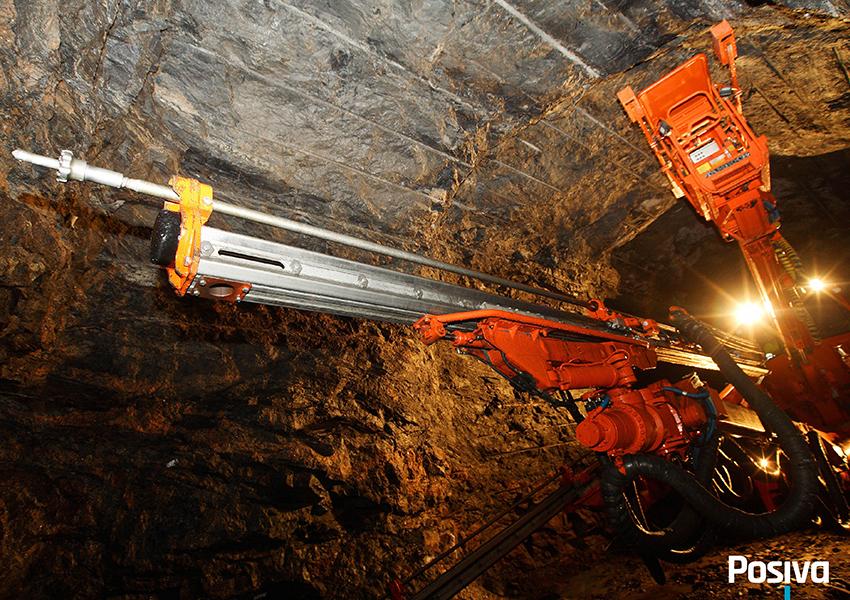Excavation
The first blasting work of ONKALO took place in June 2004. ONKALO has been excavated with the drill and blast method and the shafts by raise boring. The methods of rock construction have been refined all the time and, if necessary, completely new technology has been developed, because many things are being done for the first time in the world.
By 2020, approximately half a million solid cubic metres of rock have been excavated in order to research and implement final disposal. Much of the blasted rock has been utilised in earthwork.
The drill and blast method begins with the drilling of the holes, which are charged. Rock mass is blasted and blasted rock is transported away. The rock walls are washed and loose stones dropped. Rock is sealed where necessary with grouting and structural waterproofing. Grouted rebar bolts and shotcrete are used for rock reinforcement.
Raise boring begins with the drilling of a starter hole from top to bottom. Then, a reaming head of the size of the shaft diameter is installed at the bottom and then pulled upwards as the head rotates. The reaming head rises approximately half a meter per hour.
The deposition tunnels are drilled with a specially developed drilling jumbo manufactured in Finland. The fully computer-controlled drilling jumbo is 15.5 m long, 3.5 m high and 2.5 m wide. The machine weighing approximately 30 t has been dimensioned to allow manoeuvrability in the tunnels.
